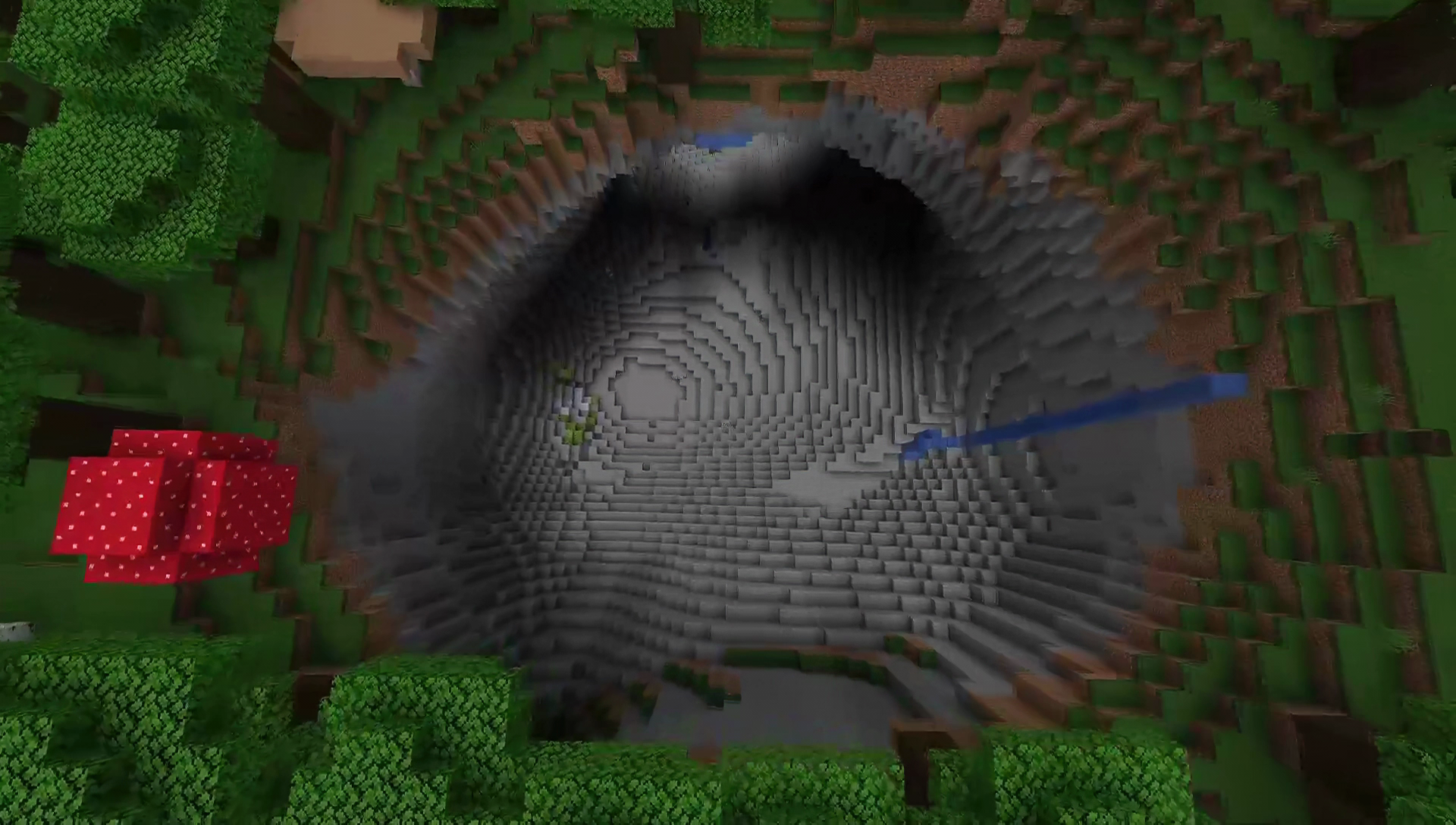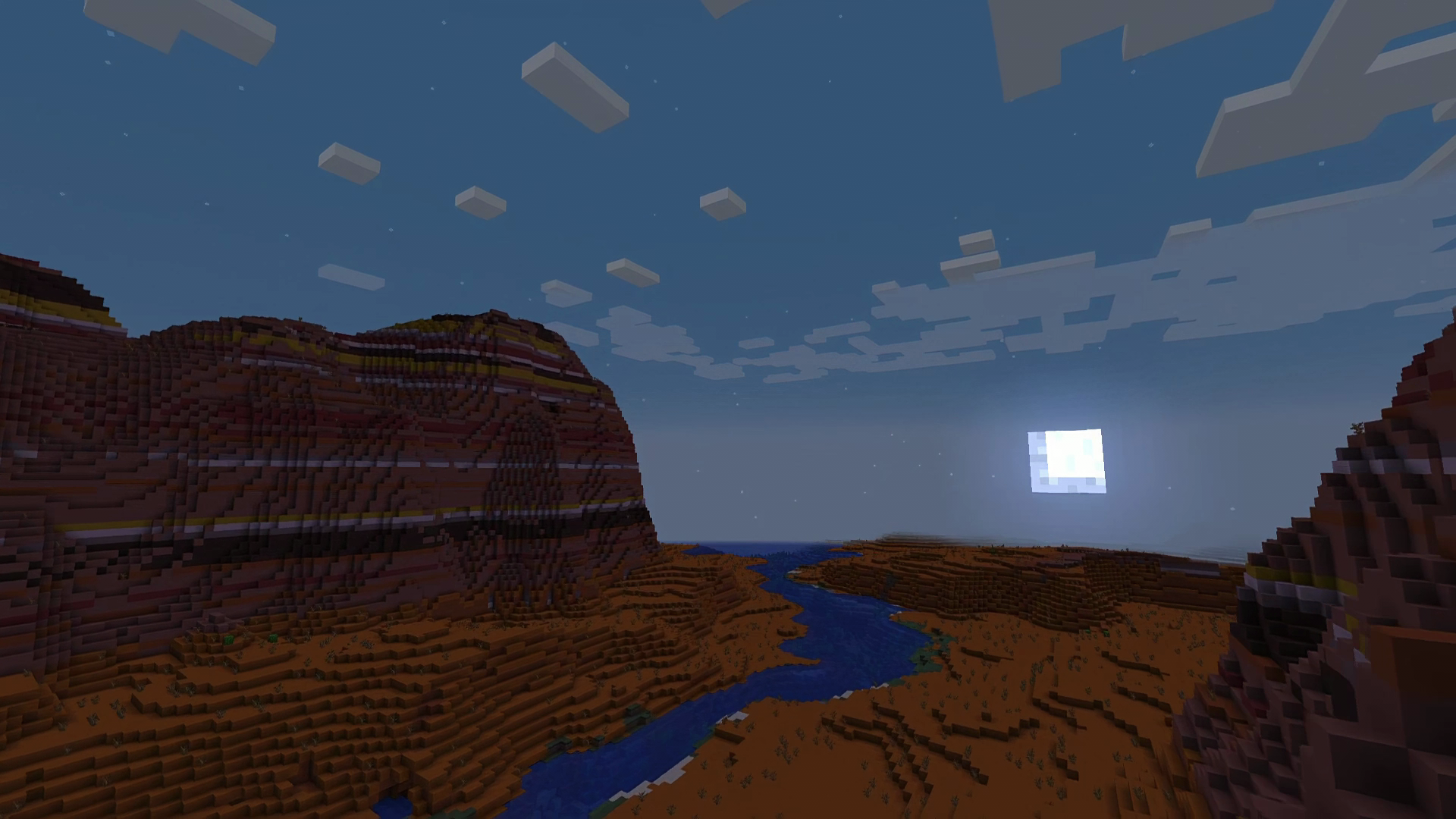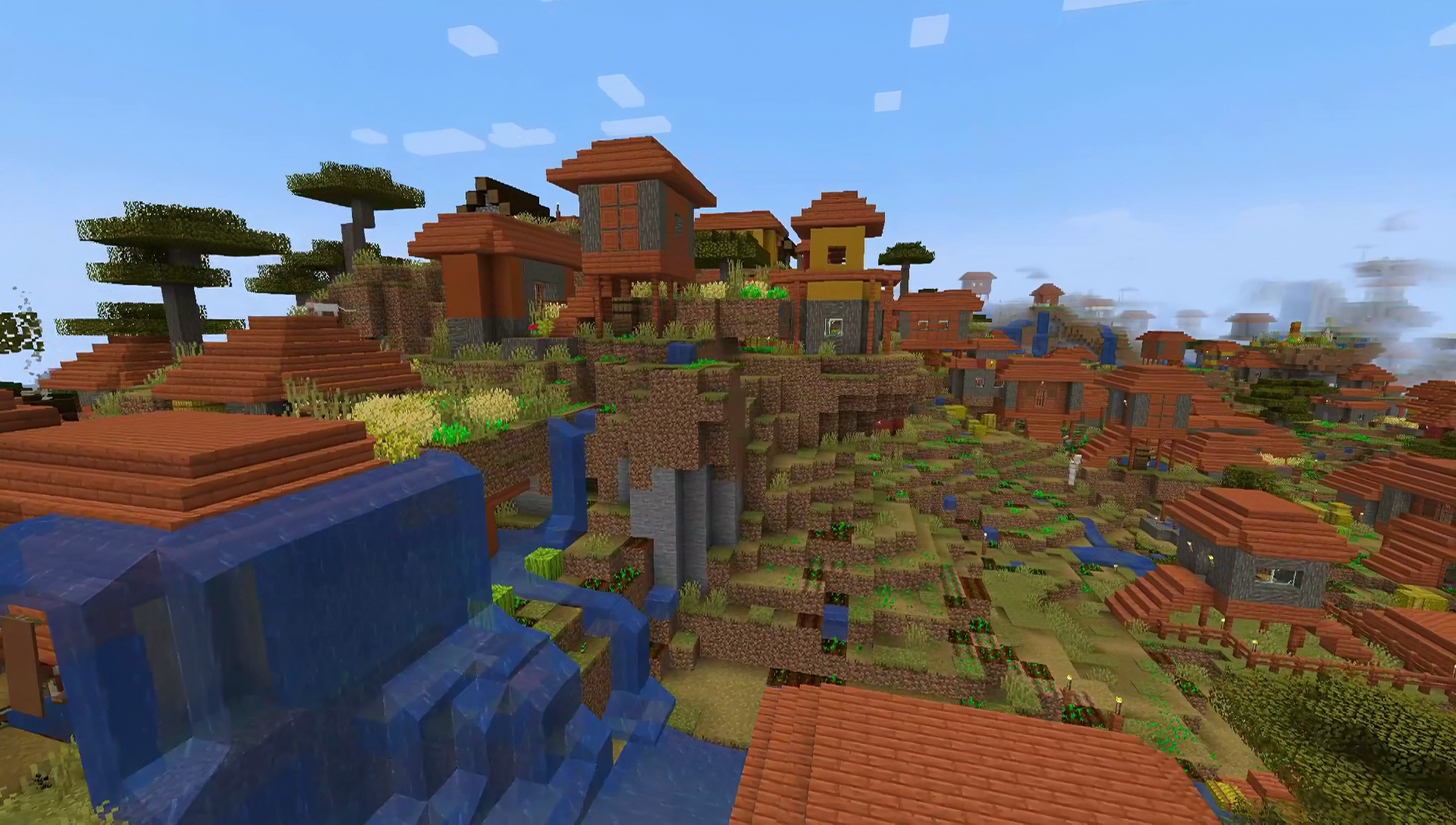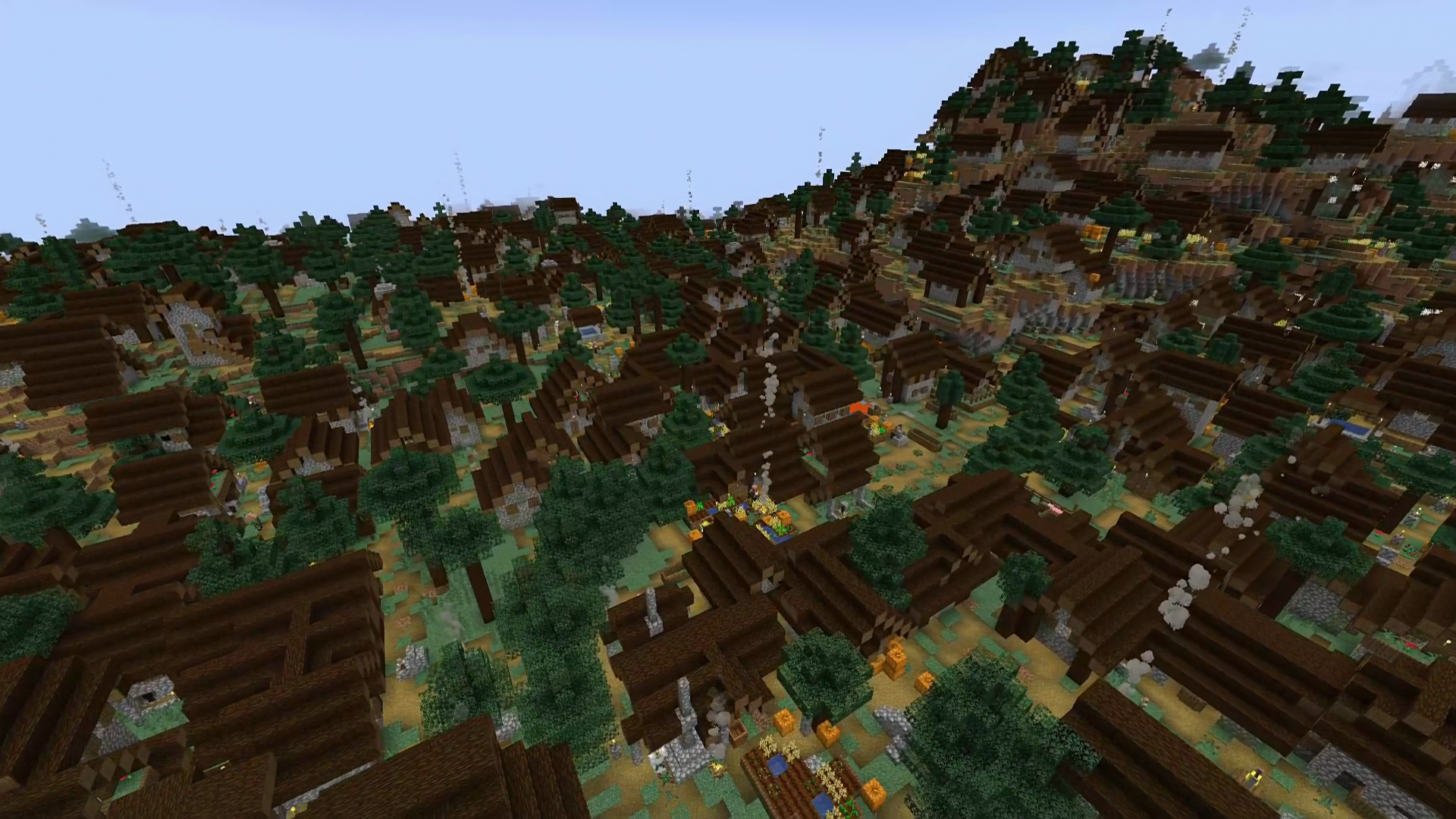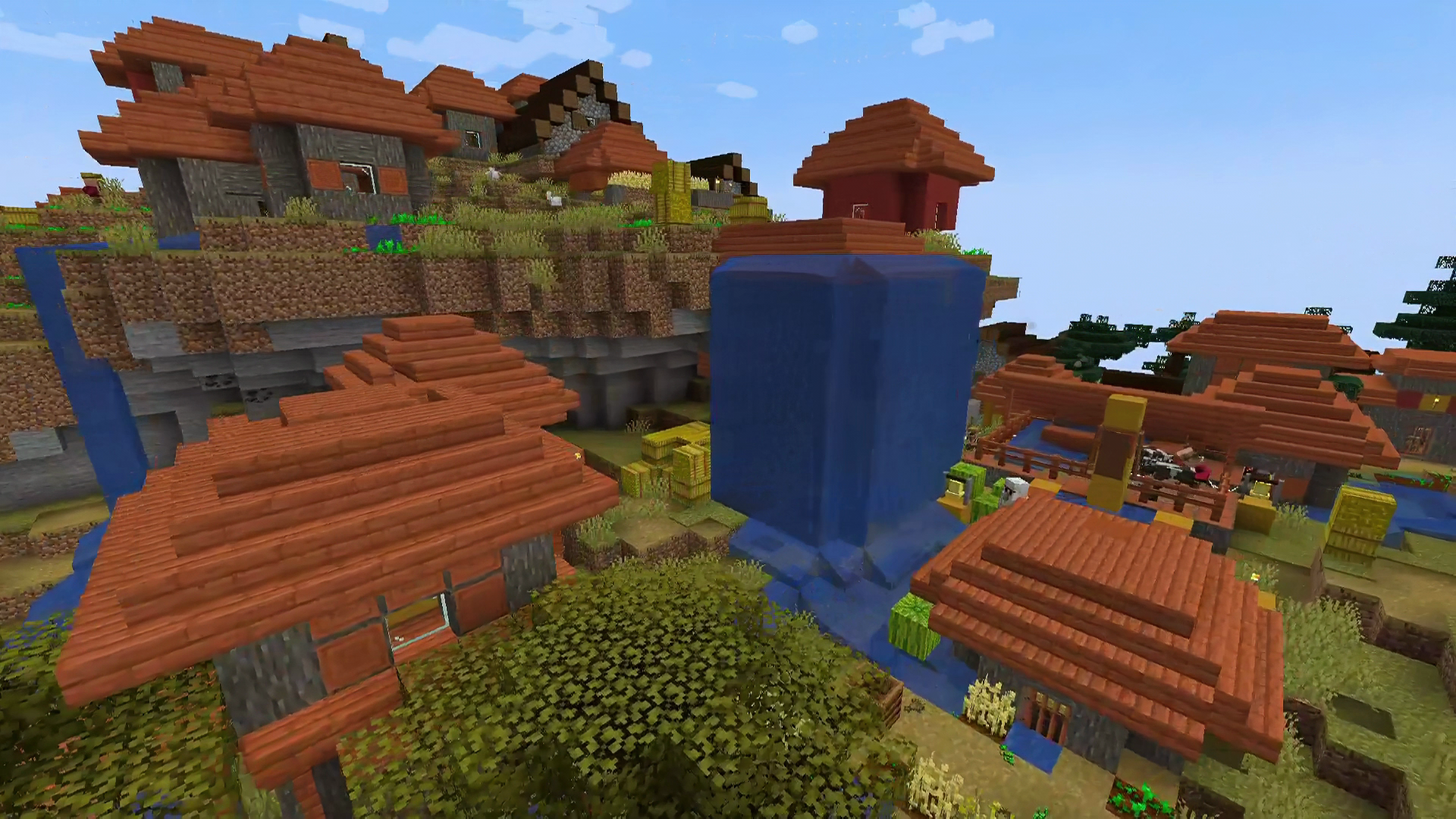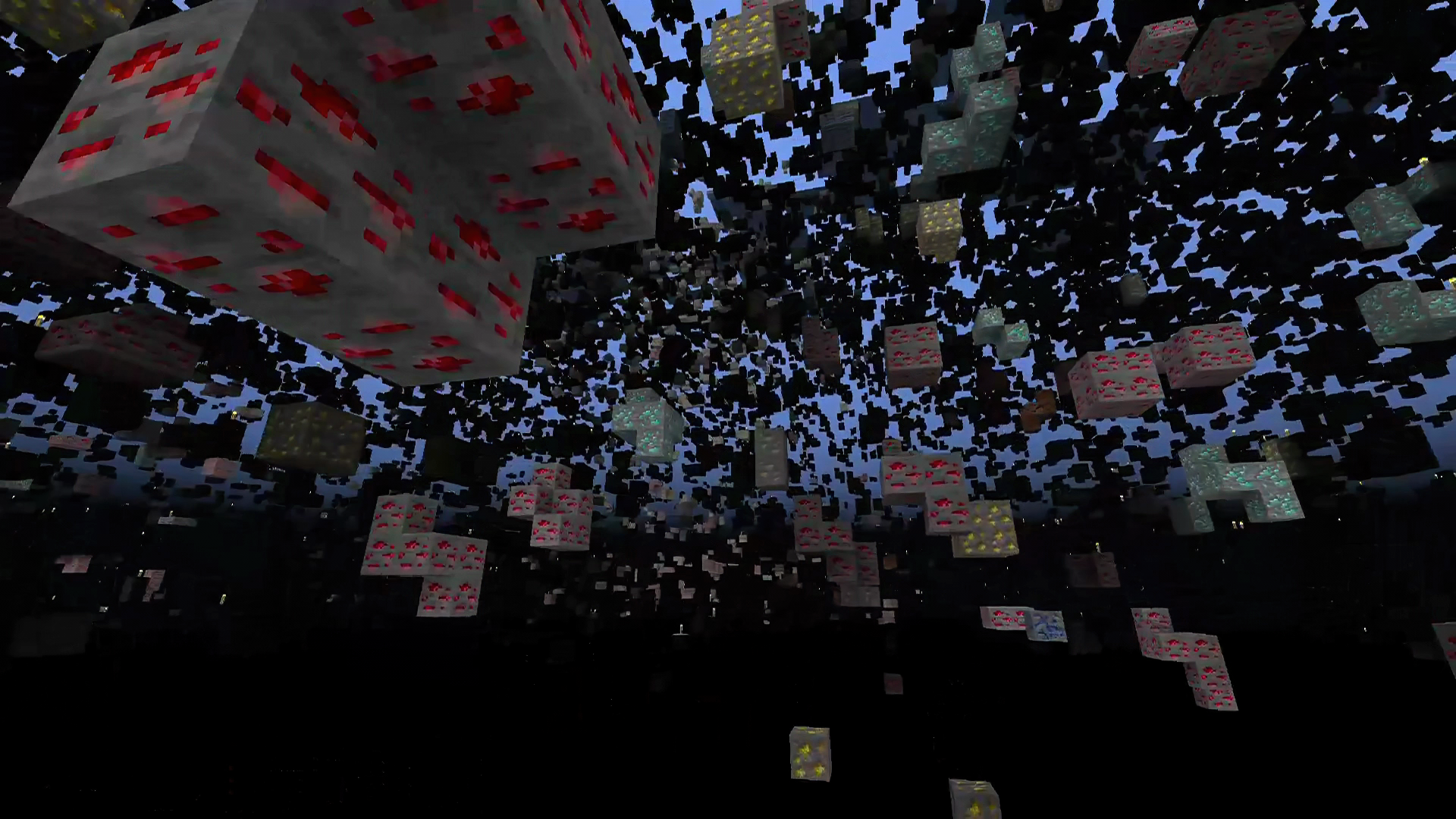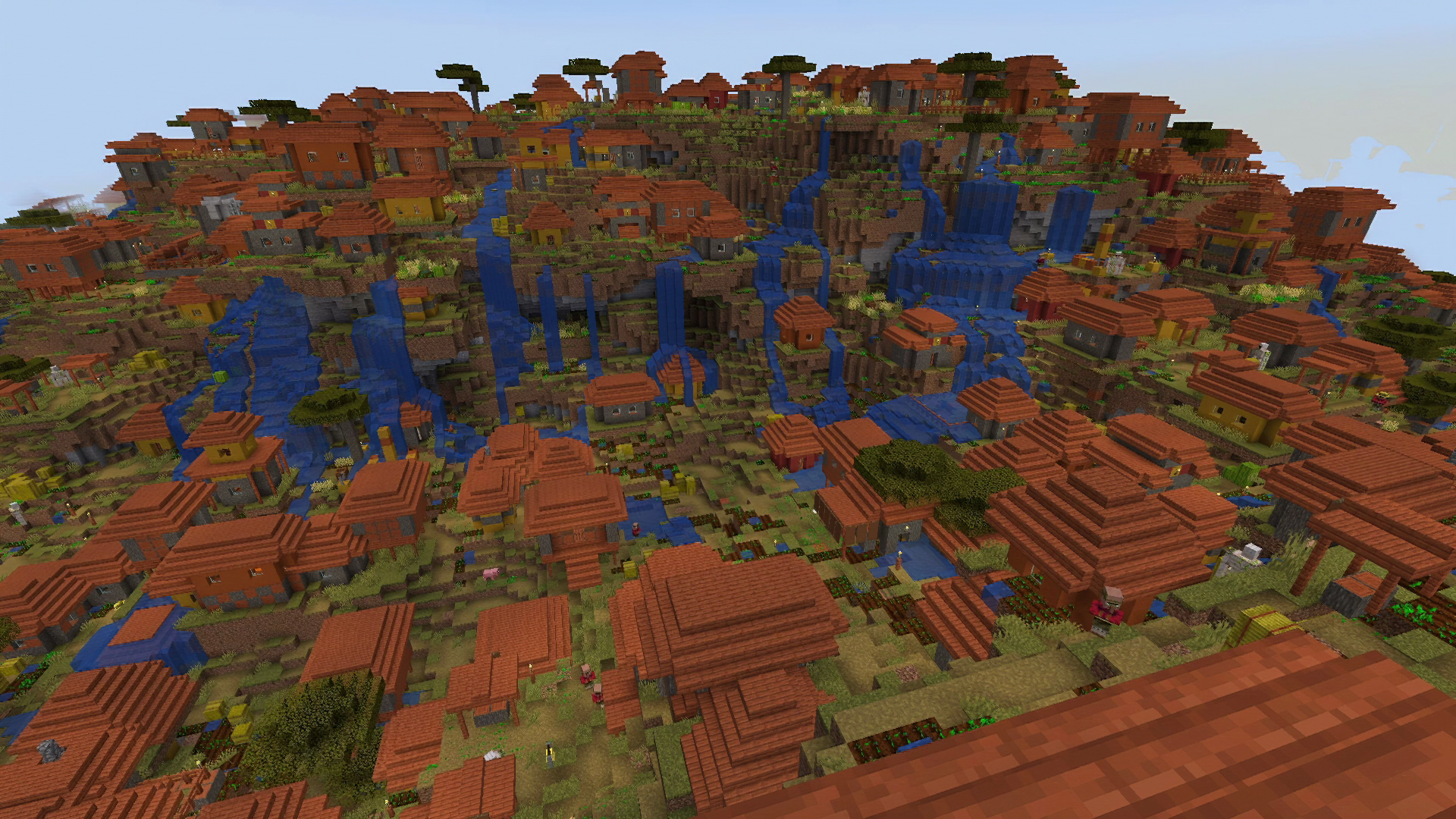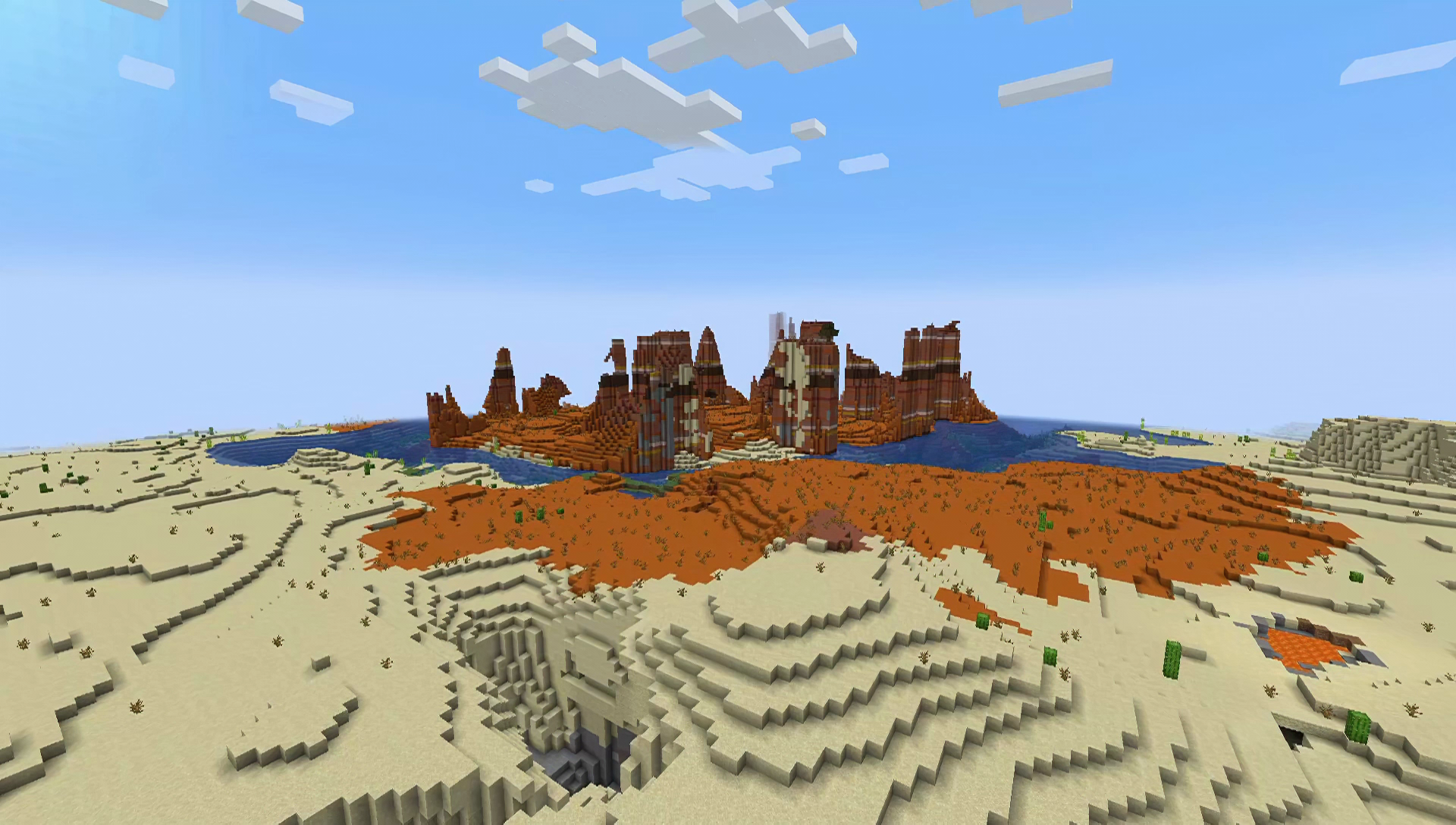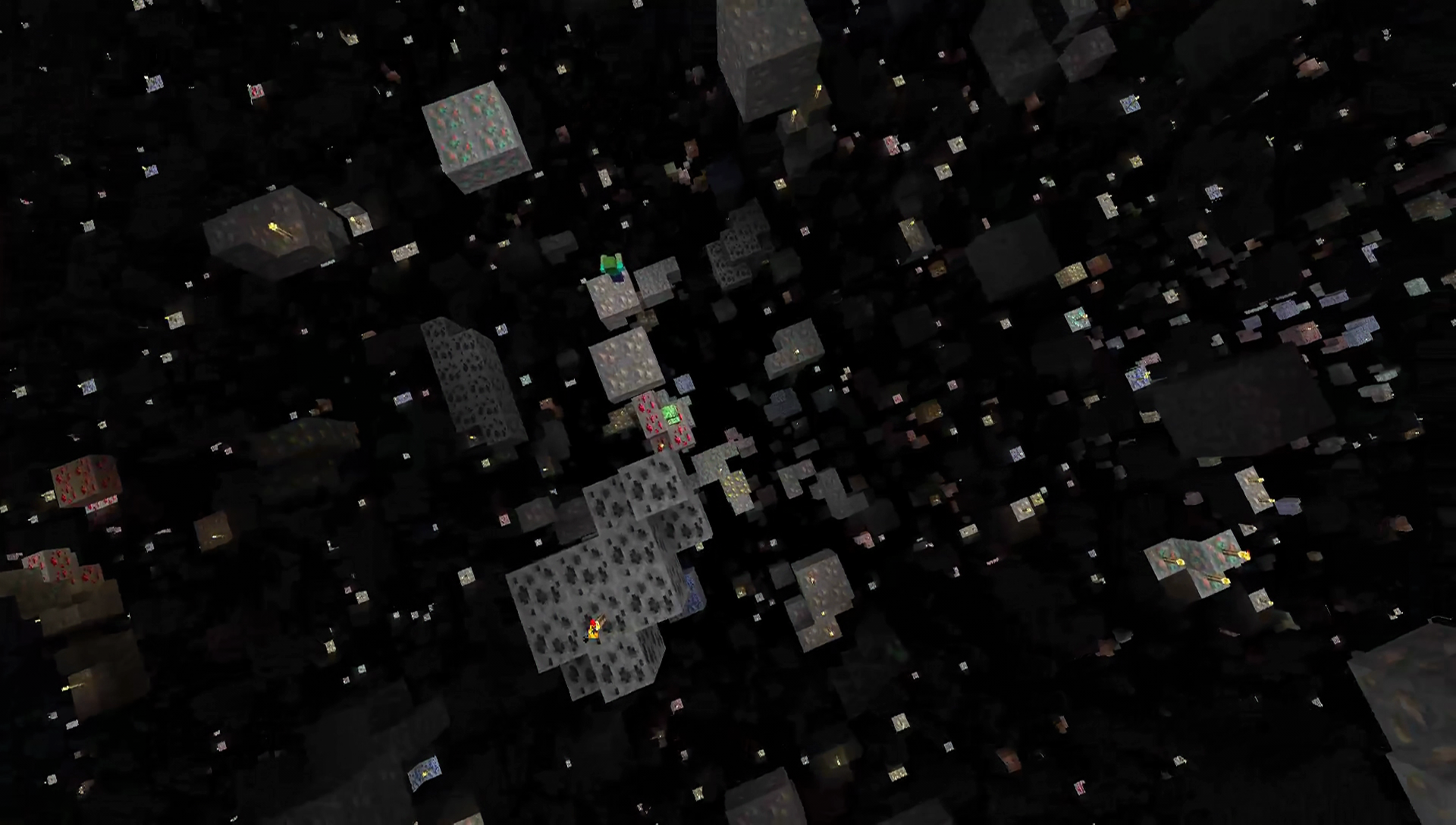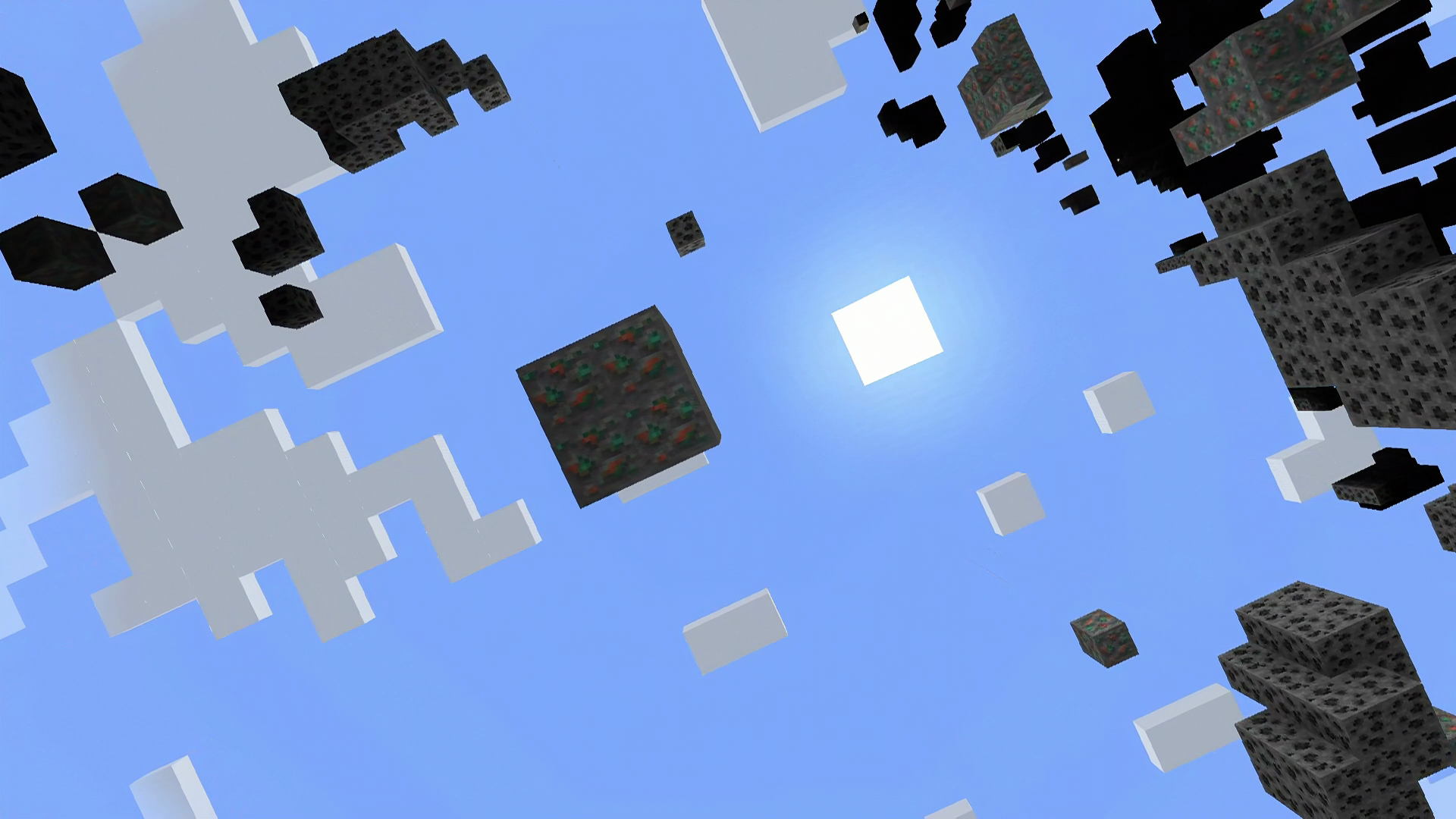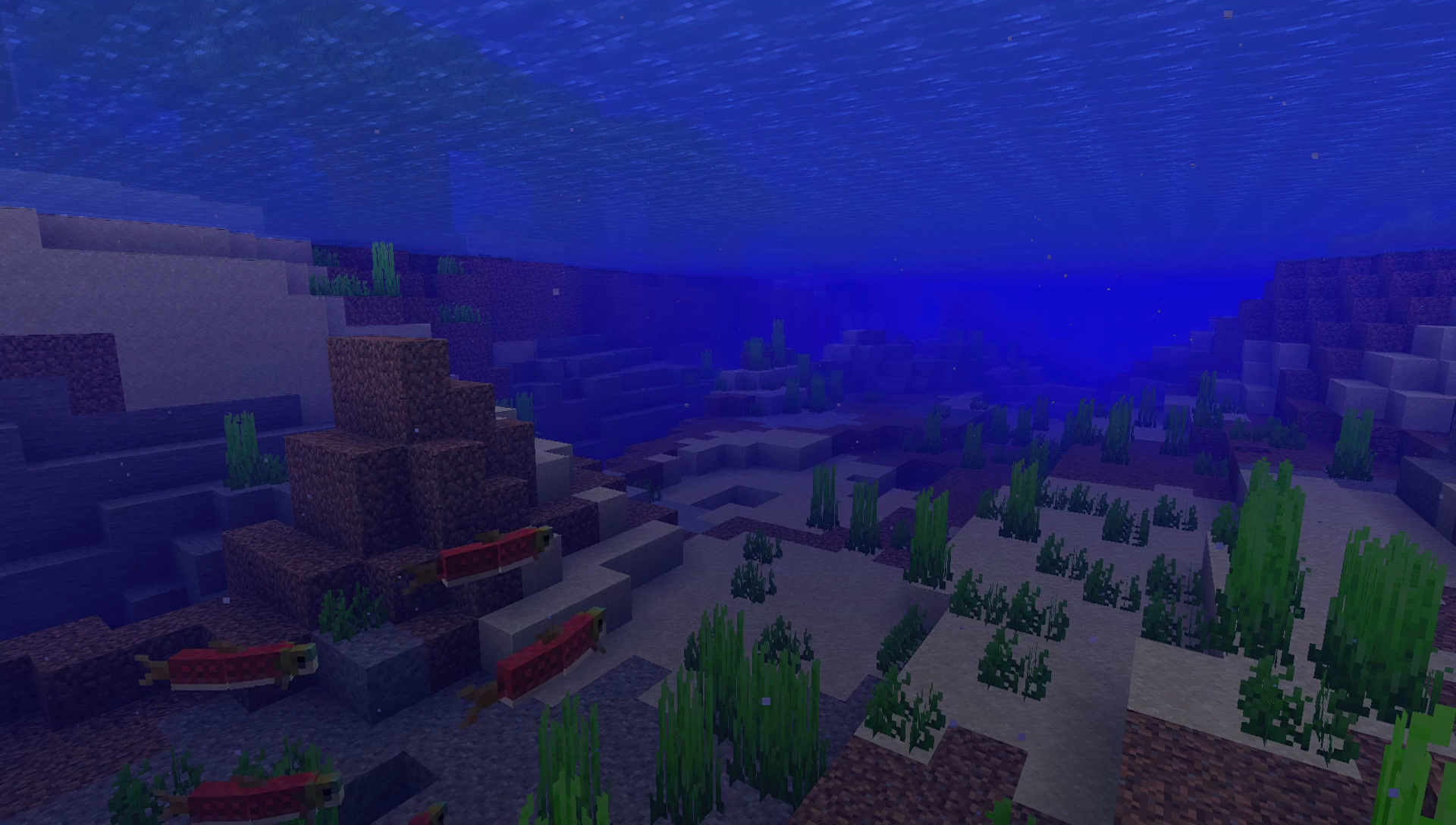Three Impossible Worlds
digital video, color, sound, 2022, 11’ 14”, United States
Created by Chris Kerich
A speculative digital art project that probes the underlying logic and limitations of procedural world generation Three Impossible Worlds was developed with/in the popular video game Minecraft. The artist began by conceptualizing a series of thought experiments: worlds deemed “impossible” within Minecraft’s existing generative framework. By subverting the game’s expected parameters, Three Impossible Worlds surfaces latent politics and ingrained assumptions coded into procedural systems.
Chris Kerich is a programmer and artist living and working in Lethbridge, Alberta. Kerich is interested in systems, constrained art, information, critical science studies, and video games. Chris is currently an Assistant Professor at the University of Lethbridge. He received his doctorate from the program in Film and Digital Media Studies at the University of California, Santa Cruz, and he has received a Master of Arts from the Massachusetts Institute of Technology (MIT) in 2017 and a Bachelor of Science from Carnegie Mellon University in 2013. Kerich’s creative endeavors have garnered international recognition and have been featured in retrospectives and events like the Milan Machinima Festival (2021, 2019, Milan, Italy) and Vector Festival (2018, Toronto, Canada).
Matteo Bittanti: You cite Yoko Ono’s seminal works Grapefruit (1964) and Acorn (2013), which transcend traditional art forms through conceptual instructions that engage the audience, as the main inspiration for Three Impossible Worlds. Much like Ono’s event scores and poetic prompts, your Minecraft worlds encourage critical thinking, participation, and reflection from players and viewers. In what ways were you specifically hoping to channel the spirit of Grapefruit and Acorn in using gaming mod tools to construct these conceptual, interactive art pieces? How do you see The Impossible Worlds as continuing the artistic legacy of those analog works in blurring the lines between artist and audience, not to mention highlighting the difference between artworks-as-products and artworks-as-processes?
Chris Kerich: Like many projects, this project has undergone many transformations that eventually brought it to the form it has today. Originally, I was focused on the ways world and terrain generation is deployed in contemporary games, specifically the way that its use is limited to gameplay affordances. I was imagining different kinds of worlds that could be generated from those tools- and I was only coming up with descriptions of those worlds. Much like in Grapefruit and Acorn, the reader’s mind was intended to be the world generator, much like how the reader’s mind is the artist in the case of Yoko Ono’s poems. As the project progressed, I realized it would actually be possible to create some of these worlds in Minecraft, and so I set about learning the tools to make them a reality. As I did so, the emphasis in the project shifted to be on just the three worlds I was creating, but I do think it’s important to recognize that the three worlds started out as evocative descriptions intended to stimulate the reader into imagining what those worlds might look like.
Matteo Bittanti: You went from conceptualizing these impossible worlds to learning modding tools to actually build and showcase them. What was the process like moving from idea to execution? Can you discuss some of the challenges in learning to use Minecraft Forge and modding tools to make your imagined worlds a reality? And how would you characterize your relationship to modding as an artistic rather than vernacular practice?
Chris Kerich: Each of these worlds started out as a one sentence description, so bringing them into a real modding situation involved filling in a lot of unstated detail. For instance, in the world without any resources, which resources are omitted? Are they simply removed, leaving empty holes, or are they filled with empty stone? Do I remove ores from just the ground or from chests and other objects as well? None of these questions were answered in my one sentence description, so the first order was figuring out how the world needed to be implemented in all of these edge cases. This is the area where programming and the arts often butt heads- a purely conceptual idea needs to become pinned to many programmatic details. I’ve previously worked in the software industry briefly, and learning modding tools reminds me of being introduced to an enterprise project that many different people have been working on before you. There’s such a density of code and embedded decisions that it often just takes a long time to understand what you’re looking at. Modding makes this even more difficult because you’re often hijacking preexisting code and injecting your own changes, which is a very convoluted way of working. I have done a few different modding projects now and every time is completely different. Each time it’s like learning a new programming language all over again.
Matteo Bittanti: Your triptych comprises blocky landscapes that are at once fascinating and unsettling, familiar and uncanny. The first is an oreless landscape where the conventional gameplay arc of resource extraction and technological progression is thwarted, laying bare its fundamental role in the game. The second renders the world solely from ores, creating a hostile and inhospitable dimension where players grasp for vanishingly scarce footing. In the final impossible world, villages sporadically generate in overlapping proximity, forming a chaotic megacity that pushes the game engine to its limits. Of these worlds, which was the most interesting to conceptualize and create? Why? Were there other prototypes? Do you envision a process of endless generation of these “impossible” landscapes, using AI as a catalyst?
Chris Kerich: The world of the three that I find myself most drawn to lately is the megacity, with its sprawling, endless overlapping houses. It was the easiest to create, in that it required the fewest alterations to Minecraft’s code, but it was the hardest to tune. Originally, the village density was even higher, but the game could not run on my computer at those settings. I had to figure out a reasonable level to get it to still express its meaning but not crash every machine it runs on. The other two worlds are at extremes without any compromise, but the megacity world had to be tuned at length. While I’m sure an AI could generate the descriptions for more impossible worlds, the code alterations needed are strictly a matter of artistic human decision that would be quite hard to replicate at the current state of AI.
Matteo Bittanti: Minecraft epitomizes many of the paradoxes of the digital age. Universally extolled as the epitome of creative play, Minecraft’s gameplay clearly promotes a neoliberal and hypercapitalist ideology. Through compulsive loops of accumulation, extraction, and exploitation, Microsoft’s game projects techno-utopian dreams of infinite economic growth. In his video essay The Virtual Frontier, Sjors Ritgers persuasively suggests that colonialist mindset and techno-utopianism is coded into Mojang Studios’ popular sandbox game. Your work Three Impossible Worlds also intelligently probes the boundaries and assumptions ingrained in Minecraft’s procedural generation systems. By surfacing implausible worlds, your art lays bare the hidden logics that shape the game’s environments. What do you feel your impossible landscapes most potently reveal about the latent politics, biases, and limitations embedded in the game’s world generation algorithms? How does procedural generation act as an authorial force to channel specific ideologies and worldviews?
Chris Kerich: I’d like to think that this work illustrates how resource extraction, especially colonial resource extraction, is deeply embedded in Minecraft in a way that is present all the way down to the core. Many scholars have written on the extractivist gameplay model at a gameplay level, and I wanted to be able to integrate this work into a discussion of the actual code infrastructure which makes the gameplay possible. The oreless world shows how reliant the gameplay model is on extracting resources from the earth – if you can’t, there are strict limitations on how far along the tech tree you can advance and a player of the oreless world would quickly encounter this issue. The “oreful” world illustrates the raw scope of many resources Minecraft generates in order to facilitate player extraction by removing everything that might block your view of them. The megacity world frustrates the implicit “terra nullius” of Minecraft. There’s always an implicit justification that resources can be taken if nobody else is using them, or nobody is living there. In the megacity world, someone is living everywhere.
Matteo Bittanti: I appreciate your nuanced take on Minecraft’s coded logic, and especially its terra nullius ideology, a concept used to justify colonial dispossession of indigenous peoples. Minecraft procedurally generate “empty” biomes for players to colonize, exemplifying how colonialist mythology extends into virtual worlds. It’s ironic – or perhaps depressing – that far from providing alternative spaces for experimentation, often gaming and virtual reality simply reproduce, even exacerbate, some of the worst ideologies. In short, as a playable simulation, Minecraft automatically reproduces historical terra nullius fictions. As such, it’s more like a distorted mirror than a utopian playground. At the same time, your “impossible” interventions subvert Minecraft’s gameplay. The oreless world cuts off technological progress by removing resources. The ore-only world provides endless resources yet leaves no safe ground. The megacity is the endgame of civilization. I’ve interpreted them as forming a sort of Hegelian dialectic, with the oreless world as thesis, the ore-only world as antithesis, and the megacity sprawl as synthesis. Does this philosophical framing accurately reflect your artistic intent? I am curious to hear if you had a specific logic or structure in mind when designing this triad of impossible environments, and how you view them working together to construct a critical argument about procedural generation in Minecraft. Please feel free to correct me if I’m off track in imposing a dialectical interpretation onto your work.
Chris Kerich: I had not considered a Hegalian dialectic in this work, but it’s an interesting thing to consider. Particularly, I find the idea that the megacity mod might be a synthesis very interesting. I don’t know if it truly resolves the tension between the first two mods, but there is something pleasing to me about thinking about the resolution to resource extraction being the introduction of Indigenous people to whom the resources already belong. I do believe there’s a lot more to be said about Minecraft’s representation of Indigeneity, and I have a forthcoming paper on that topic hopefully coming out sometime soon. Even with the introduction of the megacities as mods, the Villager AI still does not prevent or care about the player extracting all the resources from the world — they’re programmed as passive inhabitants. To that extent, while the megacity might visually imply ownership of land and resources, it would take a lot more modding to make the Indigenous characters in Minecraft actually care about their land and homes.
Matteo Bittanti: In many ways, ore functions as a kind of symbolic fossil fuel in Minecraft, with a caveat: ore is a valuable yet unlimited resource that must be continuously extracted and burned to power development. Just as the search for coal and oil fueled colonial expansion in our world, the pursuit of rare ores like diamonds and emeralds drives exploration and conquest in Minecraft. And much like the real-world fossil fuel industry, mining ore in Minecraft can have environmental impacts in the form of habitat destruction, pollution, and resource depletion. Additionally, in the game, the desire for more ore keeps players engaged in repetitive grinding loops, gamifying harmful ideologies about exploitation. Last but not least, obtaining better ore allows advancement along a tech “tree”, promoting ideals of linear progress and human control of nature through technology. Do you see ore as an intentional metaphor for real-world extractive industries? Were you thinking about parallels to the social and environmental consequences of fossil fuel dependence when conceptualizing the oreless and ore-only worlds? Just as peak oil theorists imagine an impending world stripped bare of resources, your first impossible landscape seems to imagine Minecraft without its core extractable commodity, whereas the second showcases a world in which endless extraction leads to utter destruction. Does this project aim to get players thinking more critically about parallels between in-game resource mining and real-world sustainability issues?
Chris Kerich: Minecraft presents a very folksy, innocent view of resource extraction where an enterprising individual can enter a mine with just a pickaxe and emerge with a bucket full of precious gems. The world doesn’t respond to this action almost at all. There’s no pollution or other effects from mining. Also, very few creatures or Indigenous groups react to mined ores at all. Villagers will conduct trading for emeralds, and Piglins have a sort of totemic relationship to gold, but neither will mine for those resources themselves or use them in any significant way. At the very least, I hope that engaging with worlds with no resources or only resources will push players to reconsider how the game is configuring their relationship to those resources. Not being able to advance along the tech tree will hopefully highlight the implicit imperative for advancement through extraction in the game, and just seeing all the resources laid out really makes clear how much the world is built for players to extract from it. Still, real life sustainability is far more complicated than just reconsidering a relationship to extraction, but I think the mods are a start.
Matteo Bittanti: In the megacity world, you’ve created an endless sprawl of villages colliding and merging together, removing the frontier wilderness that typically surrounds settlements in Minecraft. The third impossible world is, by all means, an urban nightmare, reminiscent of John Wilson’s take on a seminal project around SimCity, titled The Road to Magnasanti. How did this impossible landscape emerge as you were conceptualizing worlds that defy Minecraft’s standard generative logic? On one level, it seems to reveal the arbitrary, disconnected way that villages normally spawn in the game: their placement is random rather than responsive to geography or resources. But I’m curious if there were any deeper ideas or commentary you were hoping to evoke through this chaotic urban environment. Does the megacity speak to real-world issues like urban sprawl, overpopulation, or the eradication of nature in the Anthropocene? Or is it more about stretching Minecraft’s technical limits and revealing truths about its underlying systems? What inspired this specific vision of a never-ending village agglomeration?
Chris Kerich: The megacity was born from an initial concept, again, in the style of Grapefruit and Acorn, where the player would be presented in a world without room for expansion. I became very interested with the idea that world generators necessarily create “incomplete” worlds as they need to leave space for the player to inhabit them, and in Minecraft’s case, exploit and build on them. What would a world that didn’t leave space for the player look like? The megacity is intended to cover every square inch of the game world with occupants who are already busy using, working, and inhabiting that land. I think you’re right that it’s nightmarish in a sense, the density of the villages is such that villagers spawn inside of walls are immediately suffocated, there are many areas generated without the ability for villagers to enter or exit, and lava flows and lakes can sometimes intersect with villagers causing them to burn or drown. All these things are side-effects, though, and reflect that Minecraft is not built to support that scale of non-player activity. The chaos is the price paid to wrest the focus of the game away from the player.
Matteo Bittanti: I have one last question about your third world: Does this impossible megacity aim to critique the notion of there always being new “virgin” territory to conquer and extract resources from? Just as the American frontier came to an end, only to be recast in both inner space (virtual worlds) and outer space by billionaires, this world seems to imagine a version of Minecraft where the frontier has closed and been paved over with unrestrained development. What parallels were you hoping to draw between this world and the real-life limits of ceaseless expansion and settlement?
Chris Kerich: Not just the third world, but all three are engaged with considering what it means to be confronted with generated land or a world in a game. What’s your place in it, and how should it receive you? Should there be resources for you to take? Should there be people there or not? Should you be able to survive there? Each of the worlds creates something that attempts to unseat colonial ideas about free, open space, terra nullius, with resources to be freely taken.
Matteo Bittanti: Beyond modding, what other methods or practices do you think hold potential for critically subverting, defamiliarizing, and détourning mainstream commercial video games? What kind of potential do you see in practices like performative intervention, conceptual appropriation, competitive esports critique as well as altered physical gaming contexts as ways to provoke critical reflection on gaming? How might artists continue to find new avenues for effectively hijacking games as cultural artifacts and technical systems today? Are there any particular experimental approaches to gaming intervention or subversion you find inspiring?
Chris Kerich: I believe this is such an incredibly rich space, and I want to see as much art as possible engaging in it! Performance is probably the method with the lowest technical barrier to entry of any, and there have been some great pieces done in this way, micha cárdenas’ Becoming Dragon (2008) or Joseph DeLappe’s dead-in-iraq (2006) or even Anne Marie Schleiner’s Velvet Strike(2002) have all been influential game performance pieces that have really motivated me. The kind of work that I do, that’s engaged in a more technical engagement with games, has a higher barrier to entry not just of programming skills but also the fact that many games are completely closed black-box systems that resist modification. As such, there’s much less artistic technical modification work but I would like to see more! In games, the representational and the technical are intimately related and much of games critique focuses only on one or the other without appreciating the synthesis of both. Doing critique through modification or other technical practices I feel helps with this rift. My favorite experimental approach to gaming intervention is always the next one I’m working on! Right now, I’m collecting a bunch of Twitch.tv livestreams which focus on recently released games, with a goal to try to assess how much pixel-for-pixel identical footage of a game is recorded in different videos on the platform.
Matteo Bittanti: I would love to discuss another recent work of yours: GamePyg’s Face and Body Overhaul (2022). This project cleverly blurs the line between fiction and reality by situating itself as a mod on a real modding site. How does framing it as a kind of alt-reality story allow you to probe the complex relationships between modding, player entitlement, and sexualization in games? How did situating the work as an “alt-reality story” enable you to probe the complex social and psychological dynamics between mod creators and users in a speculative way? And what inspired you to engage in this unique form of performative, Internet-based storytelling as a means of critique? What kind of feedback did you receive?
Chris Kerich: This project went through many, many iterations before landing on the form it takes now. I had been researching the political affordances of polygonal modeling and I was led to considering “adult” modding communities on websites like NexusMods, who use the paradigms of polygonal models to create their mods, and effectively inject their fantasies into the games they play. Mods are really media-dense objects, with screenshots, videos, comments, etc. all contributing to how they are received and understood- I originally had just done videos and screenshots for the project, but it ended up not feeling like the whole picture. That led to the alt-reality version that exists now. The project was released “guerilla style” on NexusMods — most users were understandably confused, though some offered genuine suggestions on how to improve the mod! So, I think it must have at least had some realism for them.
Matteo Bittanti: The images that comprise GamePyg’s Face and Body Overhaul mix actual The Witcher 3 screenshots with AI-generated content, further obscuring the notion of “authenticity”. In what ways does AI generative art lend itself well to examining themes of digital alteration, objectification, and the malleability of virtual identities?
Chris Kerich: The story of the project follows a mod gaining sentience, and so it felt appropriate to have some of the later images be AI-generated, as a mode of expression for the mod that was outside of direct human interaction. As the story progresses, the mod gradually moves away from depicting itself using direct human authored models and textures and begins to remix them, culminating in the AI-generated images. Especially as the mod is attempting to escape human expectations and constraints, moving to a visual form that is outside those direct expectations is an important beat in the story.
Matteo Bittanti: Is there anything else you’d like to add?
Chris Kerich: The mods that I discuss in my video Three Impossible Worlds aree freely downloadable: Orless, Oreful, Megacity. Note that all three require a Forge installation to work. The mods were develop for Minecraft version 1.18, and may not work properly on newer or older versions.
Three Impossible Worlds
Digital video, color, sound, 2022, 11’ 14”, United States; soundtrack by C418
Created by Chris Kerich, 2022
Courtesy of Chris Kerich, 2023
Made with Minecraft (Mojang Studios/Microsoft, 2011)



